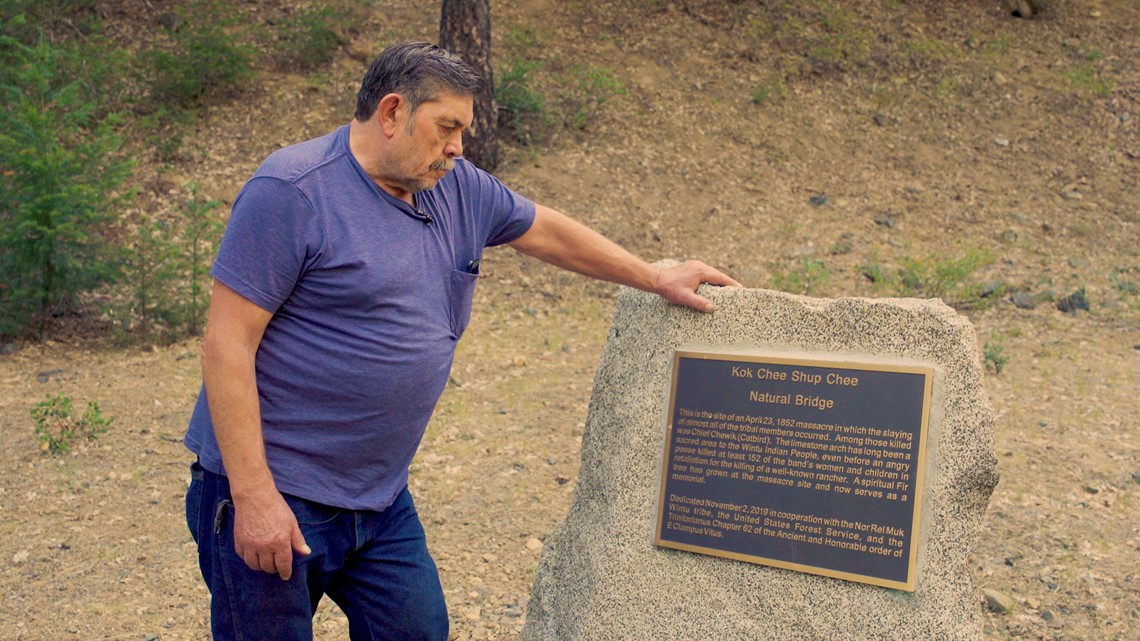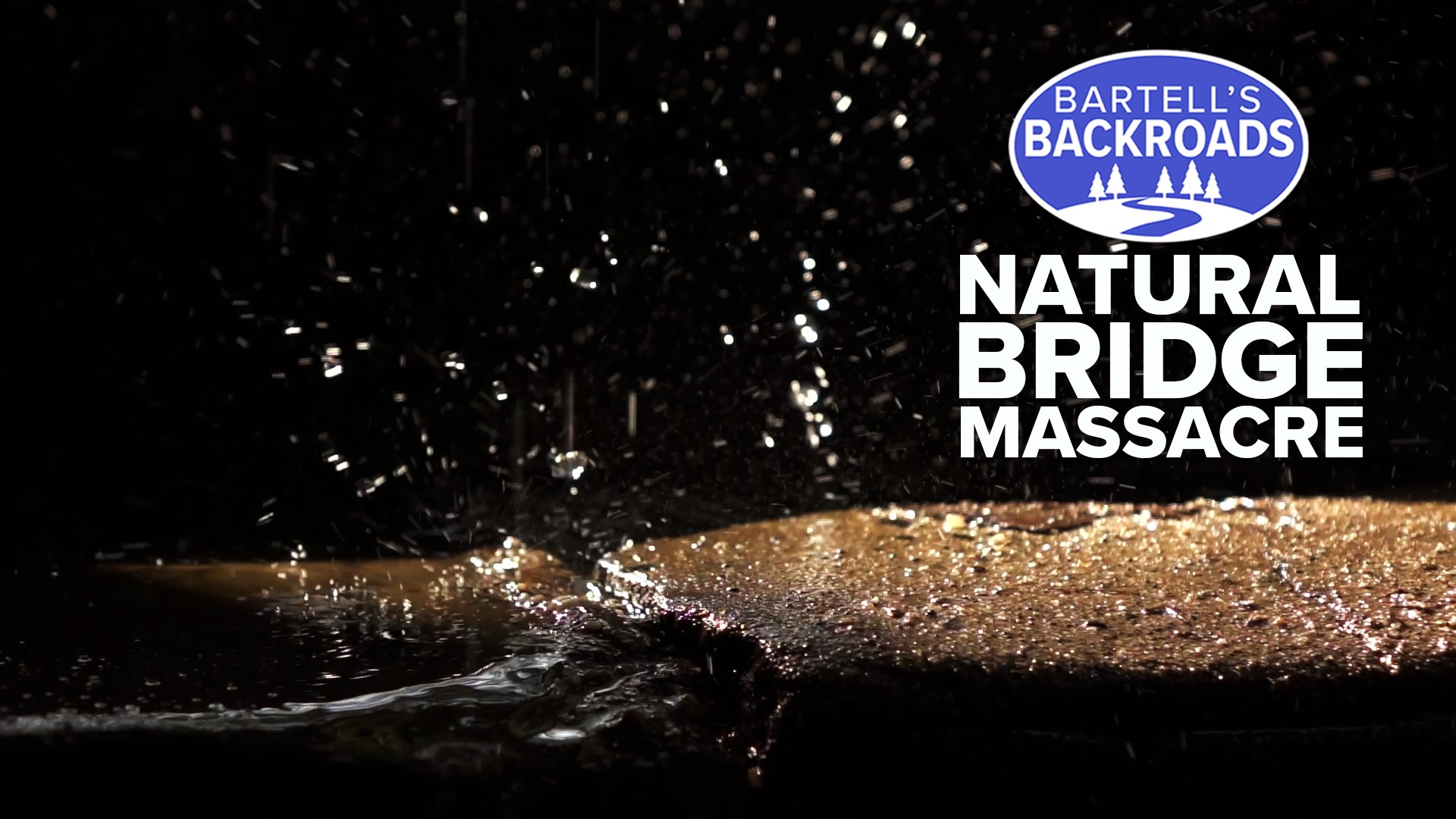HAYFORK, Calif. — Legend has it that a mighty hunter from the Nor Rel Muk Wintu tribe was carrying a bundle of animal hide through the steep canyons of Bridge Gulch in Trinity County. The hides were heavy and the canyon slick. The bundle fell from the hunter's shoulder and rolled into the creek. The Wintu call this “Kok – Chee Shuhp – Chee” or “bundle of hides.”
Today, this place is known as Natural Bridge. The geologic formation was created by water eroding the soft limestone. It’s sacred to the Wintu tribe and Jim Carrigan.
“They traveled extensively through the whole county. This was the center of their whole world here,” says Carrigan. “My grandmother was the last full-blood of the tribe.”
If the walls of Natural Bridge could talk, they would tell a terrible story.
On the morning of Apr. 22, 1852, Trinity County Sheriff William Dixon and a posse of 69 men set out for retribution. A well-known cattleman had been murdered and the sheriff suspected Native Americans.
“Should I say, scapegoat? They needed to find a guilty party. They had to have somebody accountable,” Carrigan said.
History does not tell us if there were witnesses to the murder or an investigation, but newspaper accounts tell us that the sheriff his posy surprised the Wintu at the natural bridge early in the morning.
“It was quite horrendous. The men and women were killed and shot.”
It was a massacre.


Numbers vary but anywhere from 150 to 300 Wintu were murdered. They were part of a defenseless hunting party mostly women and children. Carrigan’s grandmother’s great uncle was among the few children to escape and warn the rest of the tribe to flee. Not a single White man died.
“They weren’t even given proper burials. For years in the dirt there were rib cages, skulls or the bones still sticking out of the ground,” Carrigan said.
Today, the U.S. Forest Service now manages the Natural Bridge and the land around it. A bronze plaque tells the Wintu’s story and a sacred pine bears a shrine of offerings for those lost. The sad truth of this now public land is that not all offerings are respectful. Portions of the Natural Bridge are covered in graffiti.
“I like coming here but in another way, it’s kind of haunting. It’s necessary to come here and make the connection,” Carrigan said.
Making a connection. That is what Carrigan and the Wintu tribe hope visitors walk away with. The land here deserves respect and the unforgivable things that happened here should not be forgotten. “I don’t know if this so much shapes the tribe. It’s just a wound in their history,” Carrigan said.
If you would like to pay your respects to the Wintu tribe and visit the Natural bridge it is open to the public. The site is located in the Shasta-Trinity National Forest just outside Hayfork, California.



















